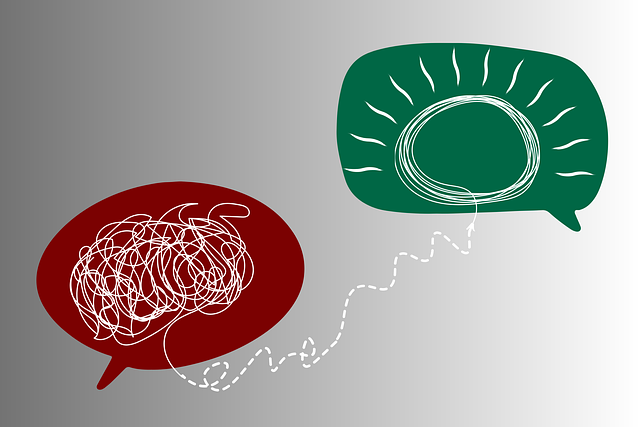Greenwood Village Cognitive Behavioral Therapy (CBT) leverages positive thinking as a powerful tool for enhancing well-being and life satisfaction, backed by research. Through self-awareness exercises, CBT therapists guide clients to replace negative thought patterns with constructive alternatives. Implementing positive thinking involves five key steps: identifying recurring negatives, challenging their reality, practicing daily, visualizing success, and tracking progress. This structured process, combining techniques like gratitude journaling and mindfulness meditation, fosters healthier thoughts, enhances personal growth, and adapts to individual responses for optimal therapy outcomes.
In the realm of Greenwood Village Cognitive Behavioral Therapy (CBT), cultivating positive thinking is a game-changer. This article explores how a simple yet powerful exercise can transform minds and lives. We delve into the science behind positive thinking, guiding readers through the process of implementation in CBT sessions. From understanding its profound impact to a step-by-step guide and progress tracking, discover how this practice can enhance well-being and become an integral part of your therapeutic journey.
- Understanding Positive Thinking and its Impact
- Preparing to Implement the Exercise in Greenwood Village Cognitive Behavioral Therapy
- Step-by-Step Guide to the Positive Thinking Exercise
- Integrating and Tracking Progress in CBT Sessions
Understanding Positive Thinking and its Impact

Positive thinking is a powerful tool that can significantly impact one’s overall well-being and life satisfaction. It involves consciously focusing on optimistic interpretations and beliefs, even in challenging situations. This cognitive shift can transform how individuals perceive and interact with their environment. Research supported by Greenwood Village Cognitive Behavioral Therapy highlights that cultivating positive thinking can enhance resilience, reduce stress, and improve mental health outcomes.
The practice of positive thinking is not merely a superficial attitude; it’s a skill that can be developed through various exercises. Self-awareness exercises play a pivotal role in this process, encouraging individuals to recognize negative thought patterns and replace them with more constructive alternatives. Public awareness campaigns have also contributed to the development of positive thinking as an essential aspect of mental health management, underscoring its potential to foster overall happiness and productivity.
Preparing to Implement the Exercise in Greenwood Village Cognitive Behavioral Therapy

Implementing a positive thinking exercise in Greenwood Village Cognitive Behavioral Therapy (CBT) requires careful preparation to ensure its effectiveness. First, therapists should familiarize themselves with various techniques such as mindfulness meditation and resilience-building activities, which are key components of CBT. These practices help clients cultivate a more optimistic outlook by focusing on the present moment and reframing negative thoughts.
In Greenwood Village, fostering mental health awareness is crucial. Therapists can prepare by creating a welcoming and supportive environment where clients feel comfortable exploring their thoughts and emotions. Using simple yet powerful tools like guided imagery or positive affirmations, therapists can guide sessions that empower individuals to challenge negative thought patterns and build resilience. This preparation not only enhances the therapy experience but also paves the way for lasting positive changes in thinking and overall mental well-being.
Step-by-Step Guide to the Positive Thinking Exercise

Implementing a Positive Thinking Exercise is a powerful tool for personal growth and well-being, as supported by Greenwood Village Cognitive Behavioral Therapy professionals. Here’s a step-by-step guide to help you navigate this process effectively:
1. Identify Negative Thought Patterns: Begin by becoming aware of the recurring negative thoughts or self-talk that often arise in your daily life. This might involve keeping a journal to track these thoughts, especially during challenging situations. Recognize the signs of cognitive distortions, such as all-or-nothing thinking, overgeneralization, or jumping to conclusions, which are common in community outreach program implementations aimed at mental health improvement.
2. Challenge and Reframe: Once identified, challenge these negative thoughts by asking yourself if they’re based on facts. Are they realistic? Consider alternative, more positive interpretations of the situation. For instance, instead of thinking, “I always fail,” reframe it as, “I had a setback, but I can learn from it and try again.” This process fosters self-awareness exercises that promote healthier thought patterns.
3. Practice Daily: Make this an everyday habit. Start with small, manageable chunks of time, such as 10 minutes each morning or evening. Consistency is key in building a positive mindset. Set reminders if needed, ensuring it becomes an integral part of your routine, much like Greenwood Village Cognitive Behavioral Therapy sessions.
4. Visualize and Affirm: Visualize success and positive outcomes, imagining the feelings associated with them. Affirm these positive thoughts out loud or in writing. For example, “I am capable and worthy,” repeated daily, can significantly impact self-perception over time.
5. Track Progress: Keep a record of your progress, noting how your thought patterns change and how you feel as a result. This will help reinforce the new positive thinking habits and provide motivation to continue.
Integrating and Tracking Progress in CBT Sessions

In Greenwood Village Cognitive Behavioral Therapy (CBT) sessions, integrating positive thinking exercises is a structured process that requires both therapist and client commitment. Therapists can introduce these practices during initial assessments, tailoring them to individual needs. Techniques might include gratitude journaling, cognitive restructuring, or mindfulness meditation, each designed to challenge negative thought patterns and promote healthier perspectives. Regular CBT sessions facilitate progress tracking, allowing clients to monitor their mood shifts, anxiety levels, and the overall effectiveness of these exercises.
This tracking becomes a powerful tool for crisis intervention guidance, as it enables therapists to adjust treatment strategies accordingly. By documenting changes in response to positive thinking interventions, therapists can identify what works best for each client, enhancing stress reduction methods over time. Such continuous evaluation ensures that CBT remains dynamic and adaptive, fostering deeper connections between therapy and real-life experiences.
Implementing a positive thinking exercise, as demonstrated through the framework of Greenwood Village Cognitive Behavioral Therapy (CBT), can significantly enhance one’s overall well-being. By following the step-by-step guide and integrating this practice into CBT sessions, individuals in Greenwood Village can effectively track their progress and cultivate a more optimistic mindset. This simple yet powerful tool has the potential to revolutionize mental health, fostering resilience and a deeper sense of contentment within the community.














